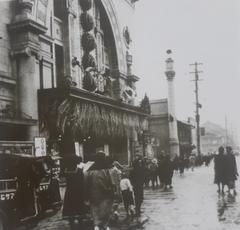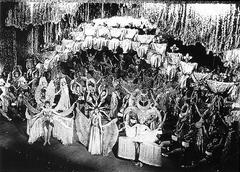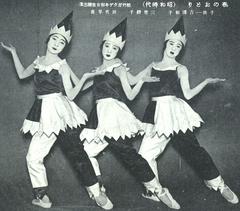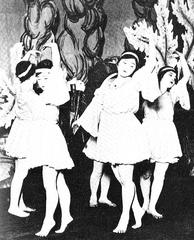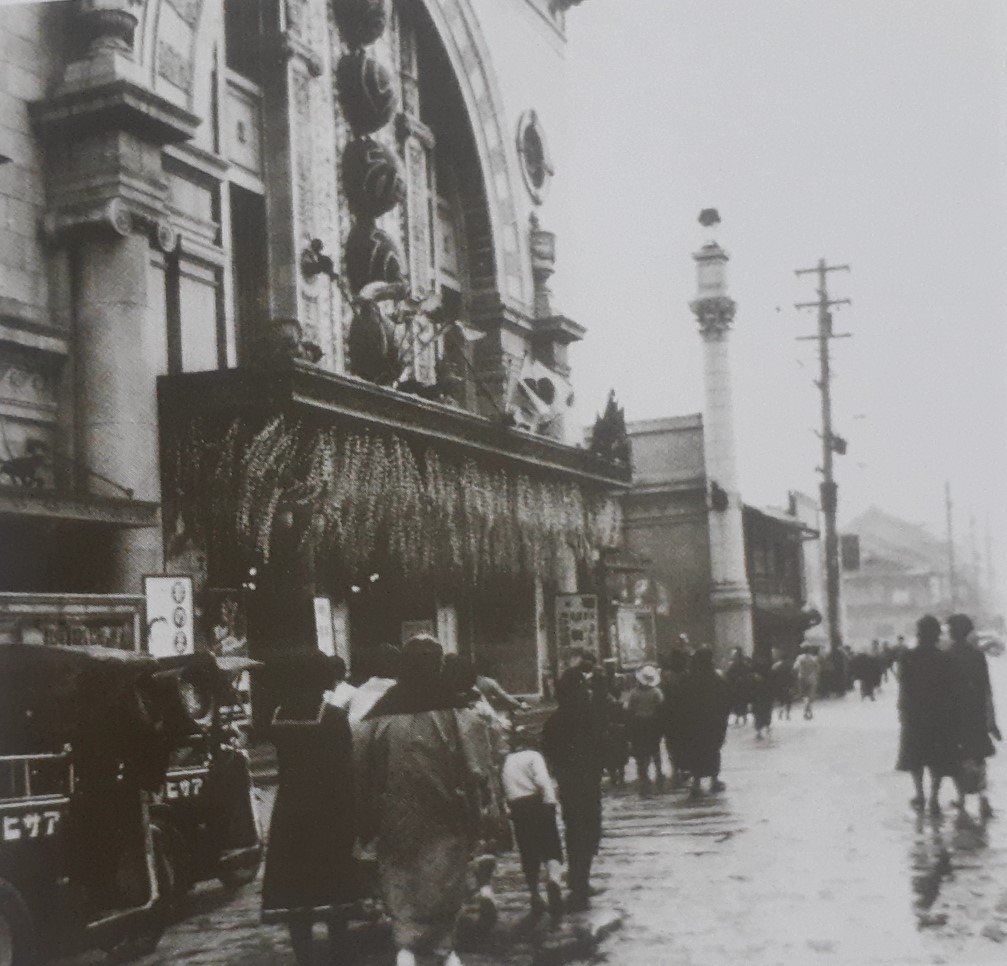
Osaka Shochikuza Theatre: Visiting Hours, Tickets, and Guide to Osaka’s Historical Sites
Date: 14/06/2025
Introduction
Nestled in the vibrant Dotonbori district, the Osaka Shochikuza Theatre is a remarkable fusion of Japanese cultural heritage and Western architectural influence. Since its opening in 1923, it has stood as Osaka’s first full-scale Western-style theatre, symbolizing the city’s openness to international trends while nurturing Japan’s rich theatrical traditions, especially kabuki. Shochikuza’s Neo-Renaissance façade—often called the “Arc de Triomphe of Dotonbori”—is a visual gateway into Osaka’s entertainment history and a must-see for architecture and performing arts enthusiasts (Osaka Info; Unique Venues of Japan).
This comprehensive guide covers the theatre’s history, architectural highlights, visiting hours, ticketing options, accessibility, and tips for exploring nearby Osaka historical sites.
Historical Overview
Early Development: Embracing Western Influence (1923–1945)
Opened in May 1923, Shochikuza was the first Western-style theatre in Kansai and a major departure from traditional Japanese playhouses. Designed by Tokusaburo Kimura of Obayashi Corporation, its Neo-Renaissance style drew inspiration from Milan’s Teatro alla Scala. Constructed with steel, reinforced concrete, and imported U.S. bricks, the theatre was both modern and resilient. The inaugural event featured both a German film and a live performance, reflecting its original dual purpose as a cinema and live performance venue (Cinema Treasures; Osaka Station).
Shochiku Company and Postwar Renewal
After World War II, Shochikuza became affiliated with the Shochiku Company, a leading promoter of kabuki and film in Japan (Japan Rail Club). The theatre retained its status as a movie house while increasing its focus on kabuki and traditional arts. Shochikuza hosted major film screenings and became Shochiku’s Osaka branch headquarters, solidifying its reputation as a cultural landmark (Cinema Treasures).
Major Renovation (1994–1997)
In 1994, Shochikuza closed as a cinema and underwent a major renovation, reopening in 1997 with a modernized interior while preserving the historic Neo-Renaissance façade. The updated theatre features 1,033 seats across three levels, advanced acoustics, rotating stage, and Italian marble interiors, blending Western opulence with Japanese aesthetics (Unique Venues of Japan; Osaka Info).
Shochikuza Today: A Hub for Performing Arts
Shochikuza now hosts a wide array of performances, including classic kabuki, contemporary drama, musicals, and concerts. The Shochiku Company has introduced innovative productions like “Super-Kabuki,” incorporating elements from manga and anime to engage modern audiences (Japan Rail Club; Osaka Info). The theatre’s programming is year-round, and about five major kabuki plays are staged annually (Japan Experience).
Centennial Milestone
In 2023, Shochikuza celebrated its 100th anniversary with special events and performances, reaffirming its place as a cornerstone of Osaka’s cultural landscape (MICE Osaka).
Architectural Highlights
Neo-Renaissance Design and Western Influence
Shochikuza’s symmetrical proportions, classical arches, and terra-cotta detailing exemplify Neo-Renaissance style. The grand arch spanning its façade is reminiscent of Paris’s Arc de Triomphe, making the theatre a distinctive presence amid Dotonbori’s neon lights (Mainichi Japan).
Facade and Materials
The use of imported U.S. bricks and terra-cotta ornamentation reflected a rare ambition for Japanese theatres at the time. The reinforced concrete structure provided fire resistance and contributed to Shochikuza’s survival during World War II (Mainichi Japan).
Interior Layout
The auditorium is designed for both optimal acoustics and clear sightlines, with ornate plasterwork and Italian marble in the lobby. The 1997 renovation preserved these historic elements while updating technical systems for modern productions (Unique Venues of Japan).
Preservation Efforts
Shochikuza’s restoration is a model for heritage conservation in Japan, preserving the historic exterior while modernizing the interior. Its continued operation connects contemporary visitors to a century of Osaka’s theatrical tradition (Mainichi Japan).
Cultural Significance
Kabuki’s Western Japan Home
Shochikuza is the heart of kabuki in western Japan, regularly hosting top actors and large-scale productions (Kabukiweb). Kabuki’s stylized storytelling, elaborate costumes, and live shamisen music captivate both domestic and international audiences, with English program guides and subtitle devices often available (Umamibites).
Community and Education
The theatre plays a vital role in cultural education through school programs, workshops, and community outreach. Initiatives like the “Try Kabuki Ticket” program make performances accessible to first-time visitors and tourists (Kabukiweb).
Visitor Information: Hours, Tickets, and Accessibility
Location & Access
- Address: 1-9-19 Dotonbori, Chuo-ku, Osaka 542-0071
- Nearest Station: Namba Station (Osaka Metro, JR, and private lines); use Exit 15B for a short walk to the theatre entrance (Kabukiweb; Matcha-JP).
Visiting Hours
- Typical Hours: Open on performance days; ticket counters from 10:00 AM until one hour after showtime. Doors open 30–60 minutes before shows.
- Performance Times: Matinees usually begin at 11:00 AM, evening shows at 4:30 PM. Check the official website for the latest schedule.
Tickets
- Online: Shochiku Multilingual Ticket Service
- Phone: +81(0)6-6530-0333 (10:00–17:00 JST)
- Box Office: At Shochikuza and affiliated venues
- Prices: ¥3,000–¥15,000 depending on seating; advance booking recommended, especially for special events (Matcha-JP)
- Special Programs: “Try Kabuki Ticket” offers affordable access for newcomers (Kabukiweb)
Accessibility
- Wheelchair accessible with ramps and elevators
- Reserved seating for guests with disabilities
- Multilingual staff and English program guides
- Coin lockers and accessible restrooms on every floor (GLTJP)
Theatre Facilities and Experience
Architecture & Atmosphere
- Façade: Grand Neo-Renaissance arch, Italian marble entrance
- Auditorium: Vibrant red seating, excellent acoustics, and sightlines
Performances
- Kabuki: Traditional and innovative productions
- Other Shows: Rakugo (comic storytelling), modern plays, musicals, and concerts
- Language Support: Pamphlets, audio guides, and subtitles available for many shows
Dining
- Restaurants: Basement levels (B1, B2) feature Japanese regional cuisine—kushikatsu, Kobe beef, Nagoya miso katsu, and bento boxes (reserve before showtime)
- Refreshments: Available during intermissions; eating/drinking inside the auditorium is prohibited (Kabukiweb; GLTJP)
Visitor Tips
- Arrive at least 30 minutes early for ticket collection and seating
- No strict dress code; smart casual recommended
- Photography is prohibited during performances but allowed in the lobby and outside
- Free Wi-Fi is not provided
Nearby Attractions
Combine your Shochikuza visit with these Osaka historical sites and cultural highlights:
- Dotonbori Canal
- Shinsaibashi Shopping Arcade
- Hozenji Temple
- Kamigata Ukiyoe Museum
- Kuromon Ichiba Market
All are within walking distance and offer a broader taste of Osaka’s culture and cuisine (GLTJP; Living Nomads).
Frequently Asked Questions (FAQ)
Q: What are the main visiting hours?
A: Visiting hours follow performance schedules; typically, matinees at 11:00 AM and evening shows at 4:30 PM. Doors open 30–60 minutes before. Check the official schedule for details.
Q: How do I buy tickets?
A: Purchase online, by phone, or at the box office. The “Try Kabuki Ticket” program is available for select shows.
Q: Is the theatre accessible to wheelchair users?
A: Yes, with ramps, elevators, and reserved seating.
Q: Are there English guides or subtitles?
A: English guides and subtitle devices are available for many performances.
Q: Can I take photos inside?
A: Photography is prohibited during performances, but permitted in the lobby and outside.
Recommendations for a Memorable Visit
- Book tickets in advance for popular shows or special events
- Arrive early to explore the theatre and surrounding Dotonbori district
- Use available audio guides and pamphlets for deeper understanding
- Combine your theatre visit with sightseeing and local dining
Conclusion
The Osaka Shochikuza Theatre is a living testament to Osaka’s dynamic cultural landscape, seamlessly blending historical architecture with world-class performing arts. Its accessibility, multilingual support, and central location make it an essential stop for anyone interested in Japanese culture. Whether enjoying a kabuki performance, admiring the Neo-Renaissance façade, or exploring nearby historical sites, a visit to Shochikuza promises an engaging and authentic Osaka experience.
For up-to-date visiting hours, tickets, and programming, always consult the official Shochikuza Theatre website. Enhance your visit with the Audiala app for real-time updates, audio guides, and exclusive content.
Sources
- Osaka Info
- Unique Venues of Japan
- Osaka Station
- Cinema Treasures
- Japan Experience
- Japan Rail Club
- MICE Osaka
- Mainichi Japan
- Kabukiweb
- Matcha-JP
- GLTJP
- Umamibites
- Living Nomads
- Japan Highlights
